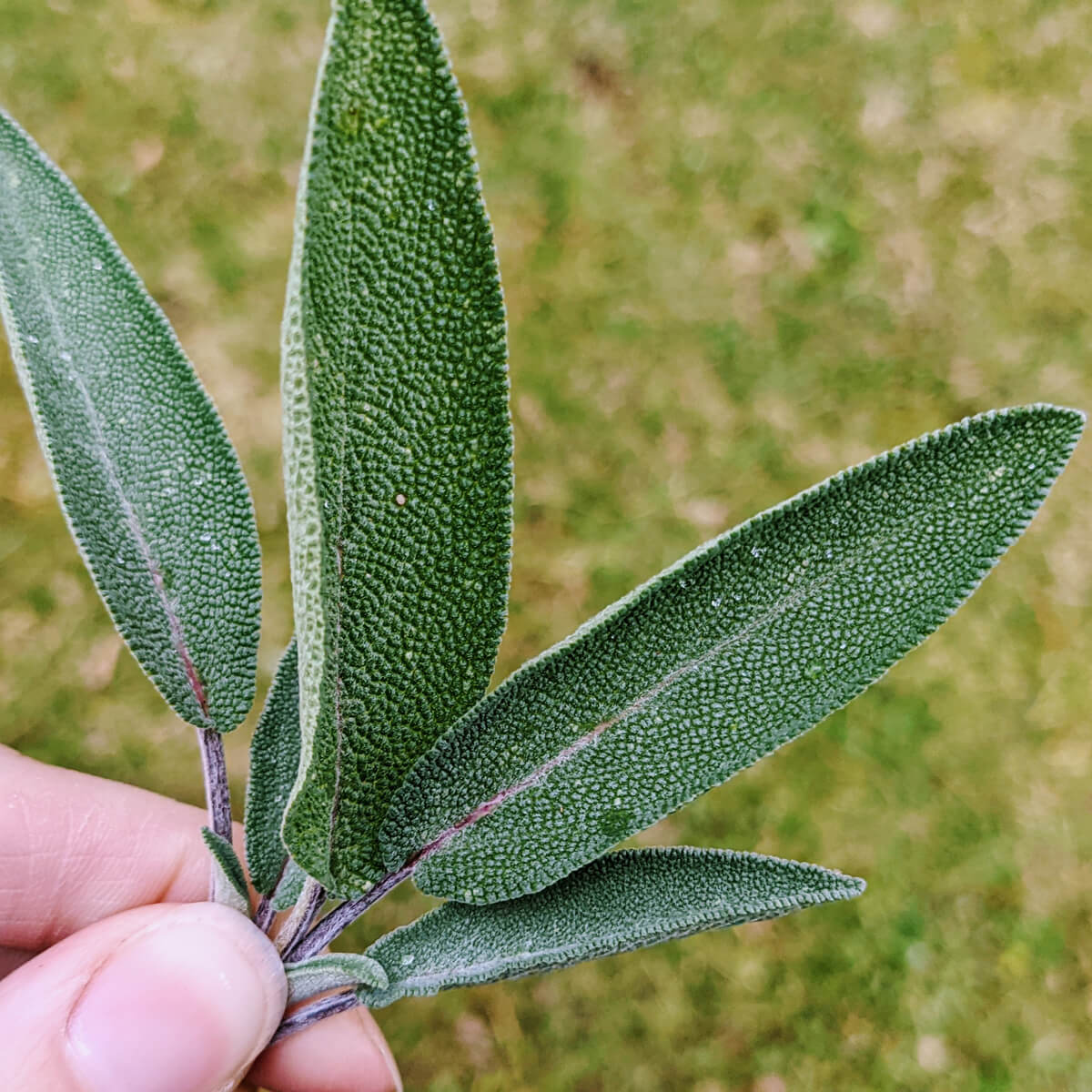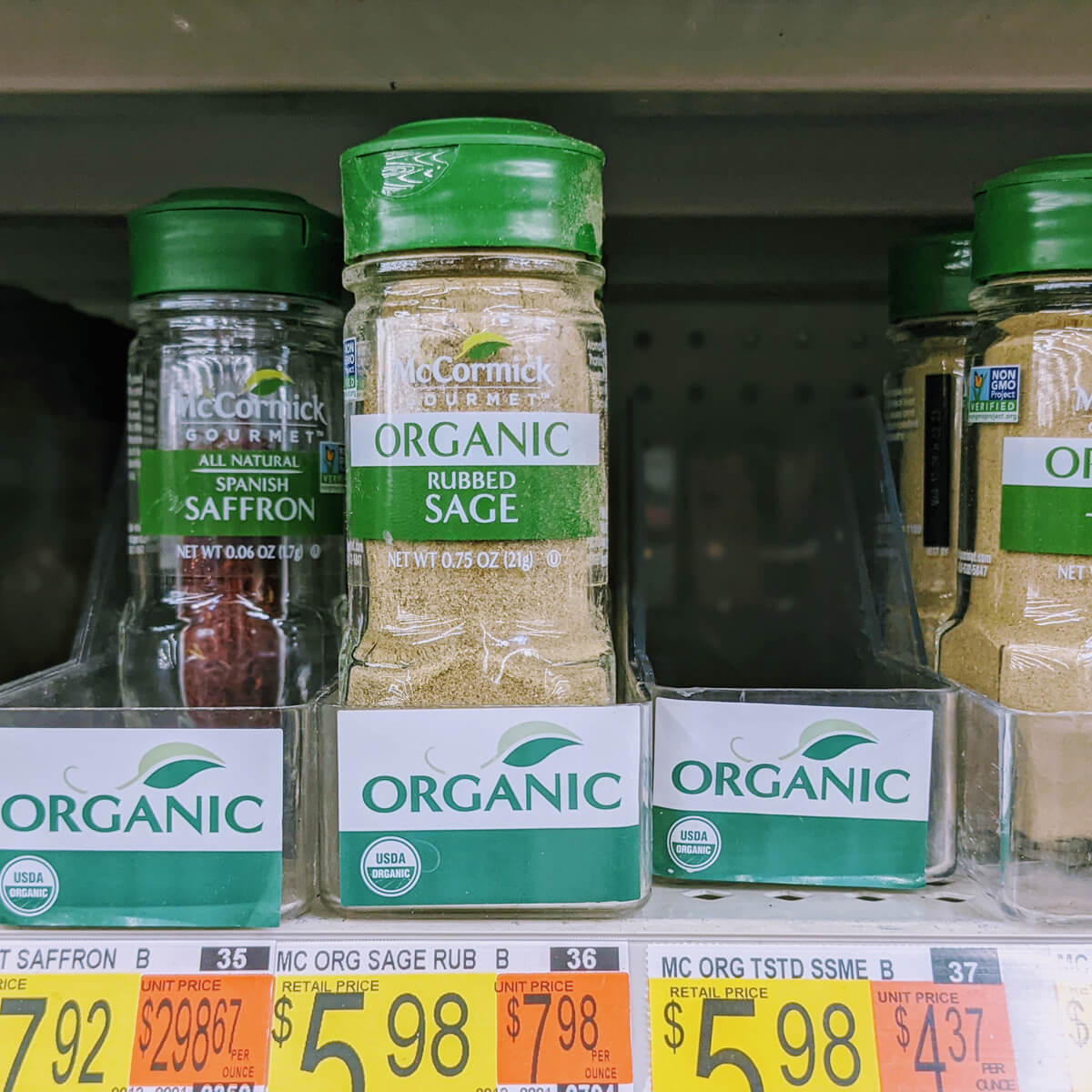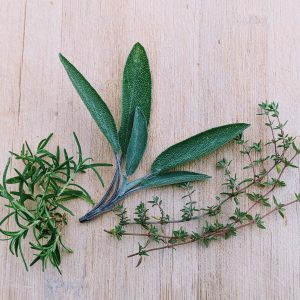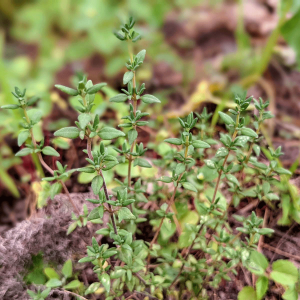Sage Substitute Ideas – Finding a Good Substitute for Sage
Let’s be honest, nobody wants to run to the grocery store in the middle of making dinner, or any recipe for that matter. If you find you’ve run out and need some sage substitute ideas, I’ve got you covered.
I’ll guide you through an easy process of finding a good substitute for sage, whether dried, fresh, rubbed, or ground.

Follow along to consider different sage substitutes and see which one might work best in your recipe.
What foods go well with sage?
Using sage as a culinary herb brings unique flavors to the table. Sage goes well with chicken, pork, duck, beef, and savory entrees like sausage. Try adding sage in an herb mixture for a roast chicken or roasted turkey. Sage may also be tasty with veggies or soups and stews.
What does sage taste like?
Officially known as Salvia officinalis, sage is a perennial herb with an earthy, musky taste. This herb tastes a bit minty as it is from the mint family, Lamiaceae. Available as a whole leaf, or a ground (powder) or rubbed spice, sage pairs nicely with other herbs to create a fragrant and flavorful herb blend or mixture.
Finding a Good Substitute for Sage
When looking for a sage seasoning substitute, keep in mind the flavor, texture, and cooking time for the dish. Not all herbs are created equal or behave in the same manner.
Consider these key points to help you find a good sage substitute.
- Texture – Is the whole sage leaf actually necessary? Can you use rubbed sage, dried sage, or powdered sage equally across the board?
- Flavors – If you have no sage at all, does the recipe work without it? Can a spice blend pick up the slack?
- Cook Time – Does the recipe cook for a long time, short time, or not at all? Can other herbs withstand the cooking time without degrading in quality? As one example dried or rubbed sage works well added in the beginning of the cooking process whereas fresh sage does best when added closer to the end.
Once you know how important real, actual sage is in your recipe, you can make a better determination if you can find a good herb to sub for sage.
Of course, if you can’t, there’s always your local 24-hour grocery store. But hopefully we don’t have to go down that path!
Can you substitute dried sage for fresh? What about rubbed sage?
Many cooks prefer to substitute dried sage for fresh. Dried sage is more potent and it’s also quite easy to incorporate into a recipe. When substituting dried sage in place of fresh, add 1 teaspoon of dried spice for every tablespoon of fresh. If using rubbed sage as a substitute, replace at the ratio of ½-teaspoon per tablespoon of fresh or per teaspoon of ground sage.
Substitute for Dried Sage
Finding a good dried sage substitute will be helpful for your recipes, should you ever find your dried sage shaker empty.
Here are some herbs to consider as a suitable substitute for dried sage.
Fresh Sage
When I’m out of dried sage, I simply go out to my garden and pull a few leaves from my fresh sage herb plant. Substitute to taste but usually you can swap 1 teaspoon of dried sage with 1 tablespoon of fresh sage.
Rubbed Sage
Rubbed sage makes a substitution for dried sage. Replace dried with rubbed at about the rate called for in the recipe. For example, use ½-teaspoon rubbed sage for each teaspoon of dried sage required.
Other Dried Herbs
Sometimes finding a replacement for dried sage is as easy as coming up with your own custom blend of fresh or dried herbs. Consider these flavorful options you can sub for sage.
- Marjoram – Add marjoram late in the cooking process to avoid losing flavor. The woody notes should offer a close flavor to cover the missing sage.
- Oregano – Almost all kitchens have a little jar of oregano hiding out somewhere! Plan to use this spice instead of sage if needed, especially for Italian cooking, sauces, and more.
- Rosemary – Earthy, evergreen notes make rosemary a delightful herb to sub for sage in a variety of recipes.
- Thyme – Dried thyme works well in a variety of dishes and it is similar to sage in many ways.
- Basil – Italian and Mediterranean dishes may benefit from using dried basil as a sage substitute.
You might even like to create your own sage substitution herb blend to achieve the flavors you want to enjoy in your recipe.
Substitute for Fresh Sage
When a recipe calls for fresh sage, you can almost always replace with rubbed sage, ground sage, or dried sage, as mentioned above with the reverse sage swaps.
If you’re looking for a fresh sage substitute, consider these herbs:
- Oregano – The youngest leaves will have the mildest flavor.
- Rosemary – This strong herb brings a lot to the table, sub for sage in moderation until you’re happy with the flavor.
- Tarragon – Fresh tarragon holds more flavor than dried, so start with the freshest you can find. Rub the leaves or chop them a bit to release the flavor and aroma-filled oils.
- Thyme – Fresh thyme leaves bring a slightly different flavor but still work great as a sage alternative.
- Bouquet Garni – Create your own bouquet garni or seasoning blend using sprigs of your favorite herbs. Chances are, your dinner guests may not even miss the sage in the first place!
Rubbed Sage Substitute
If you need a rubbed sage substitute, ground sage or dried sage will usually do just fine. You can also mince up some fresh sage from your garden or the store if you have it.
If you have no sage at all, try using any of the other sage substitute ideas listed in this post to cover your missing sage in the recipe.

Sage Substitute Ideas in Summary
Here are some options for sage substitutes to consider:
Marjoram
With woodsy notes and a hint of citrus, fresh or dried marjoram works well as a sage substitute. This herb is a prime example of one that doesn’t endure high temps or long cooking times, so if you are using marjoram to replace sage, try to wait until the end of the cooking process for this swap.
Fresh Rosemary
The piney, herbaceous flavors of fresh rosemary are intoxicating. Rosemary can be a wonderful sage substitute, but be careful not to use too much since the fragrance and flavor are so strong. For best results, choose fresh rosemary leaves. You can mince them if you like, but be aware this will release even more flavor and fragrance.
Rosemary is an excellent herb for seasoning potatoes, chicken, turkey, pork, and beef, among others.
Oregano
With a bit of Italian flair, oregano can stand in as a substitution for sage in some recipes. It’s also part of the same family and brings an earthy and peppery flavor to the dish. You can use fresh oregano or dried oregano instead of sage.
Poultry Seasoning
If you have poultry seasoning in your cupboard already, you can try it as an alternative to sage. Most of the time this seasoning blend already contains sage, so you can recoup some of the flavor you’d otherwise be missing.
Try using poultry seasoning as a sage replacement in recipe dishes for turkey, chicken, or a variety of game birds, among others. You can also try it on fish, veal, lamb, meatloaf, and a slew of side dishes. (By the way, if you like this post, you might also enjoy the one I did on poultry seasoning substitute ideas.)
Summer or Winter Savory
If you don’t have sage on hand, you also may not have savory. But, if you do, you can try subbing in savory as a substitute for sage seasoning. (Wow, that’s a lot of alliteration, even for me!)
Also hailing from the mint family, savory brings a peppery note to recipes, so start small with your substitution, aiming for half-strength of whatever was required for the amount of sage. Remember, you can always add more.
Tarragon
For even more peppery flavor when you need a sage substitute, try tarragon. Earthy with a touch of citrus, tarragon also brings notes of anise, so be prepared for that. You can generally get the best results when substituting fresh tarragon for the missing sage.
Fresh or Dried Thyme
Try using thyme as a substitution for sage in your recipes. The flavors are a bit different but still delicious and complementary to many dishes. Subbing thyme for sage works well with meats and vegetables especially.
- For dishes calling for dried or rubbed sage, use dried thyme.
- For dishes that require fresh sage, use fresh thyme.
Basil
While the herbs are fairly distinct from each other, you can also try dried basil as a substitute for sage. Basil isn’t my favorite sage swap Different types of basil each bring their own key flavors, so you can use what you have on hand or improvise a bit. Some basil has a bit of citrusy, lemony flavor while other types may be more peppery or mint-like. Use basil as a sage replacement in moderation at first and then add a bit more as needed.
Oh, and remember, if you end up using fresh basil, it won’t hold up to long cook times or high temperatures. Just keep that in mind!
Deciding on the Best Sage Substitute
When you need to substitute sage, finding exactly the right swap isn’t always easy. Sometimes your mileage may vary.

Here are a few tips to help choose a good sage substitute.
- Try taste and smell. For best results, try a taste test and smell test if you can. (Understandably, some raw cooking stages won’t be suitable for that.)
- Consider fresh or dried. Sometimes it’s perfectly fine to mix and match while other times it might be better to stick with one or the other.
- Evaluate the importance. Can a sage substitute add enough flavor to save the dish? Is the real flavor that important? Make your best judgment call in choosing a sub for sage.
Keep in mind that your dinner guests may not even miss the sage. Put yourself in their shoes for a moment and see if your recipe can live without it.
Did you find any great sage substitutes for particular dishes and recipes? We’d love to hear what worked and what didn’t work for you so we can all help each other.
Feel free to reach out in the comments below. And if you found this post helpful, please share it so others can enjoy it, too!






